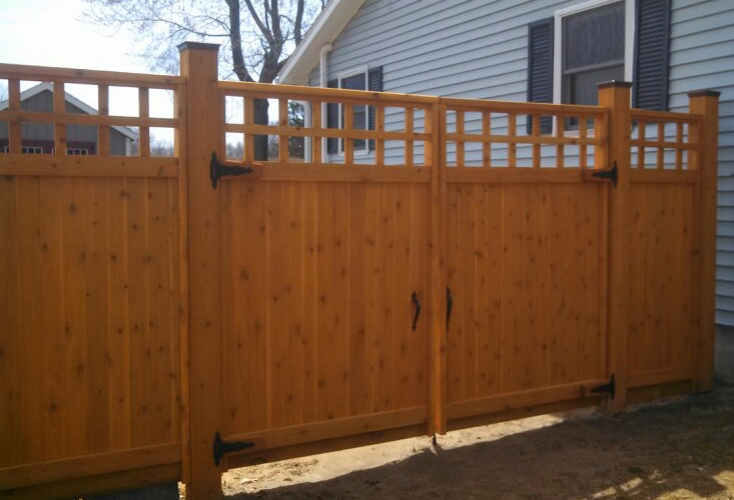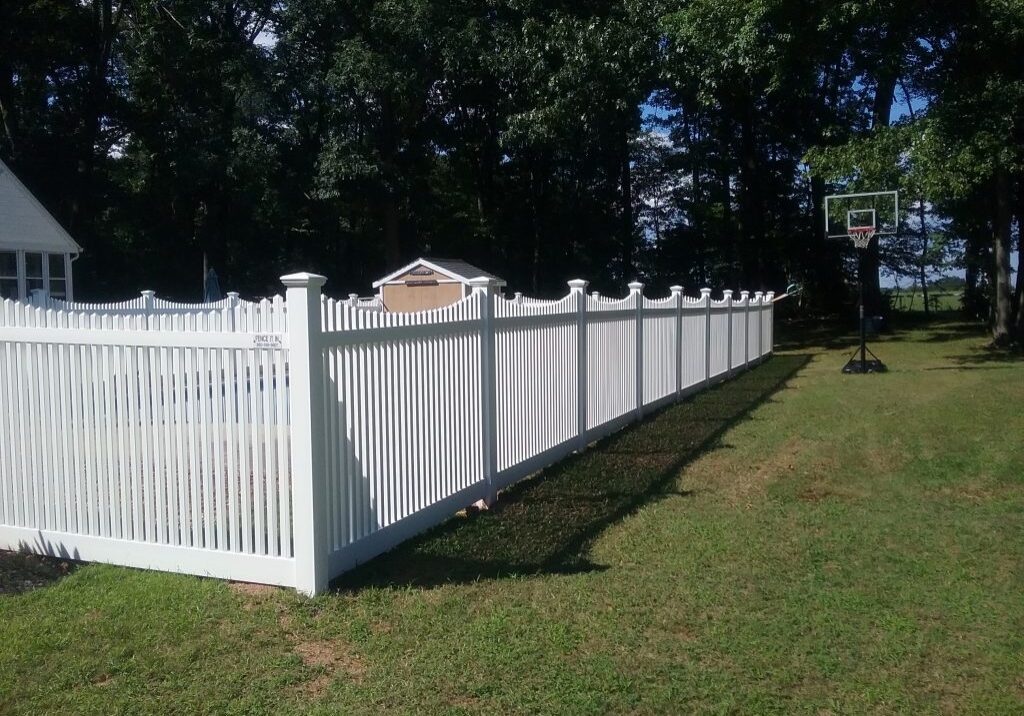All Categories
Featured
When it pertains to maintaining a wooden fencing, house owners typically face the decision of whether to paint or stain. Both alternatives have their benefits and drawbacks, and the option eventually depends on your visual choices, the type of wood, and how much maintenance you agree to devote to. Here's a thorough comparison to aid you make an informed decision.
The Basics of Paint and Discoloration
Painting entails covering the timber with a nontransparent layer of shade. It offers total coverage, concealing the timber grain while supplying excellent defense versus ecological components.
Tarnishing penetrates the timber, boosting its natural appeal while adding a safety layer. Depending on the type, stains can range from transparent to solid, permitting varying degrees of wood grain visibility.
Benefits And Drawbacks of Painting
Pros:
Wide Range of Color styles: Repaint deals limitless color options, permitting you to match your fence to your home's exterior or individual style.
Longer Lasting: Premium exterior paint can last as much as 5-7 years, requiring much less frequent reapplication.
Superior Security: Paint types a thick, strong barrier versus dampness, UV rays, and insects.
Cons:
Fracturing and peeling: Over time, paint can peel or break, especially in locations with extreme weather.
Hides Natural Timber Elegance: If you enjoy the all-natural grain of timber, paint may not be the very best selection.
Higher Upkeep: Repainting requires removing the old paint, which can be labor-intensive.
![]()
Benefits And Drawbacks of Discoloration
Pros:
All-natural Appearance: Spots preserve and improve the all-natural elegance of the wood, making it perfect for high-grade timber like cedar or redwood.
Less Complicated to Reapply: Unlike paint, discolorations don't fracture or peel off. Reapplying discolor commonly requires less surface area preparation.
Versatile Finish Alternatives: Discolorations can be found in transparent, semi-transparent, and strong selections, providing various levels of protection.
Disadvantages:
![]()
Shorter Life-span: Spots, particularly clear and semi-transparent ones, might need reapplication every 2-3 years.
Minimal Color Alternatives: While discolorations supply natural tones, they lack the broad color combination available with paint.
Less Protective: Discolorations pass through the timber however do not supply as thick a barrier as paint, making them a little much less safety versus severe weather condition.
Elements to Take Into Consideration
Aesthetic Preferences: If you desire vivid shades and full protection, paint is the way to go. For a all-natural and rustic look, choose for tarnish.
Timber Kind: Top quality timbers with stunning grains profit from discoloration, while lower-grade woods can be repainted for a polished look.
![]()
Climate: In damp or moist climates, paint's thicker barrier may supply far better defense. In dry or modest environments, stains can suffice.
Upkeep Dedication: Paint involves less regular reapplication but more effort throughout touch-ups. Discoloration needs regular maintenance yet is easier to handle.
Final Ideas
Both paint and staining can successfully secure and beautify your wood fence. The most effective option depends on your top priorities, whether they favor visual appeals, sturdiness, or ease of maintenance. By understanding the advantages and downsides of each, you can choose the coating that lines up with your requirements and guarantees your fencing continues to be a standout attribute of your home for several years to find.
The Basics of Paint and Discoloration
Painting entails covering the timber with a nontransparent layer of shade. It offers total coverage, concealing the timber grain while supplying excellent defense versus ecological components.
Tarnishing penetrates the timber, boosting its natural appeal while adding a safety layer. Depending on the type, stains can range from transparent to solid, permitting varying degrees of wood grain visibility.
Benefits And Drawbacks of Painting
Pros:
Wide Range of Color styles: Repaint deals limitless color options, permitting you to match your fence to your home's exterior or individual style.
Longer Lasting: Premium exterior paint can last as much as 5-7 years, requiring much less frequent reapplication.
Superior Security: Paint types a thick, strong barrier versus dampness, UV rays, and insects.
Cons:
Fracturing and peeling: Over time, paint can peel or break, especially in locations with extreme weather.
Hides Natural Timber Elegance: If you enjoy the all-natural grain of timber, paint may not be the very best selection.
Higher Upkeep: Repainting requires removing the old paint, which can be labor-intensive.

Benefits And Drawbacks of Discoloration
Pros:
All-natural Appearance: Spots preserve and improve the all-natural elegance of the wood, making it perfect for high-grade timber like cedar or redwood.
Less Complicated to Reapply: Unlike paint, discolorations don't fracture or peel off. Reapplying discolor commonly requires less surface area preparation.
Versatile Finish Alternatives: Discolorations can be found in transparent, semi-transparent, and strong selections, providing various levels of protection.
Disadvantages:

Shorter Life-span: Spots, particularly clear and semi-transparent ones, might need reapplication every 2-3 years.
Minimal Color Alternatives: While discolorations supply natural tones, they lack the broad color combination available with paint.
Less Protective: Discolorations pass through the timber however do not supply as thick a barrier as paint, making them a little much less safety versus severe weather condition.
Elements to Take Into Consideration
Aesthetic Preferences: If you desire vivid shades and full protection, paint is the way to go. For a all-natural and rustic look, choose for tarnish.
Timber Kind: Top quality timbers with stunning grains profit from discoloration, while lower-grade woods can be repainted for a polished look.

Climate: In damp or moist climates, paint's thicker barrier may supply far better defense. In dry or modest environments, stains can suffice.
Upkeep Dedication: Paint involves less regular reapplication but more effort throughout touch-ups. Discoloration needs regular maintenance yet is easier to handle.
Final Ideas
Both paint and staining can successfully secure and beautify your wood fence. The most effective option depends on your top priorities, whether they favor visual appeals, sturdiness, or ease of maintenance. By understanding the advantages and downsides of each, you can choose the coating that lines up with your requirements and guarantees your fencing continues to be a standout attribute of your home for several years to find.
Latest Posts
How to Know When Your Car Needs Expert Vehicle Service at Montclare Auto Repair
Published en
1 min read
Learn About Montclare Auto Repair’s Most Popular Services and Why Drivers Rely On Them
Published en
1 min read
Take Advantage of Special Auto Repair Offers in Chicago at Montclare Auto Repair
Published en
1 min read
More
Latest Posts
How to Know When Your Car Needs Expert Vehicle Service at Montclare Auto Repair
Published May 27, 25
1 min read
Learn About Montclare Auto Repair’s Most Popular Services and Why Drivers Rely On Them
Published May 26, 25
1 min read
Take Advantage of Special Auto Repair Offers in Chicago at Montclare Auto Repair
Published May 25, 25
1 min read